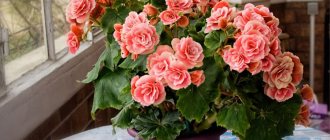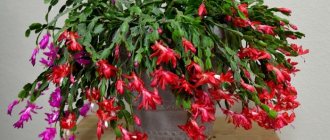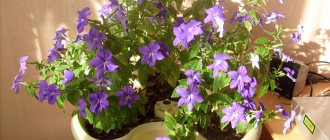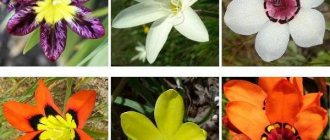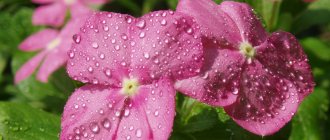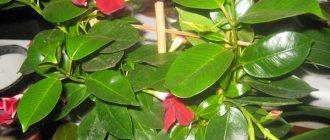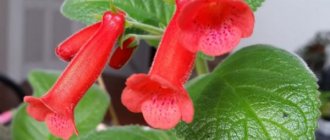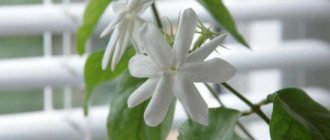Drimiopsis - This home plant will be loved by everyone who prefers beautiful bright green leaves to showy flowers. It does not require special attention, forgives mistakes made in care and is not picky about the conditions in which it is grown. Despite the fact that this plant comes from the tropics, it thrives in the microclimate of city apartments. Drimiopsis lives a long time, reproduces easily, has good endurance and is very beautiful, which is probably the reason for its great popularity among gardeners who grow houseplants.
Origin and history of Drimiopsis:
Drimiopsis (Drimiopsis) is a herbaceous perennial belonging to the Hyacinth subfamily and the Asparagus family. The plant is native to the southern and eastern parts of the African continent. Under natural conditions, it grows as a ground cover plant, forming a continuous deciduous carpet. When grown at home, it often develops rosettes.
The name is translated from Greek as similar to drimia. This is probably due to its similarity to sea onions. The plant has another name - Ledeburgia, nicknamed Scylla. The fact is that the flower was discovered by Karl Friedrich von Ledebur, who is a naturalist and researcher of flora in African countries and thanks to whom the first flower growing school was founded in the Russian Empire. He also headed the first botanical garden in Rus'. The flower was named after him. The nickname Scylla does not appear in our time, but in the 19th century the plant was called this quite often, including in botanical books.
Description
The culture belongs to the asparagus family.
Drimiopsis also has a second name – ledeburia or scylla, and the plant’s homeland is Africa. Today, there are about two dozen species of flowers in nature, but only a few of them can be cultivated indoors. The indoor plant stands out for its decorative greenery and flowering, as well as simple agricultural technology. In harsh climates, it is better to cultivate perennials indoors. Drimiopsis has a developed root system of a bulbous type, and its main part is located above the ground, which adds some exoticism to the appearance of the flower. The leaves are formed quite low, the green mass is planted on thin petioles, which can reach a length of 10 to 15 centimeters. In this case, the dimensions of the leaf plate, depending on the type, will vary between 12–25 centimeters. In their shape, they can follow the contours of the heart or grow ovoid. Usually their end is slightly pointed with a smooth surface of the leaf plate. The color of the leaves can be plain, striped or spotted.
Flowers are formed on a spike-shaped inflorescence; as a rule, about three dozen buds painted white-green can be present on one stem. The flowers do not stand out for their size; on average, the diameter of an open bud does not exceed 5 millimeters. During the flowering phase, the crop emits a rather subtle floral aroma. In nature, flowering of drimiopsis can be observed in the spring or summer months; As for home culture, indoor varieties are capable of producing buds all year round, but on the condition that in winter some types of plants will be in the dormant phase.
Drimiopsis species:
Today there are about 22 species of this beautiful plant, but only 14 have a scientific description and official registration. Only two types are used for growing at home.
Drimiopsis kirk, also called Ledeburgia bortioides. The height of the plant is about half a meter. Its bulb is very similar to a regular onion. Its color is white and round in shape. The leaves are leathery and lanceolate in shape. They reach 40 centimeters in length and 5 centimeters in width. Starting from the central part, the leaves begin to taper towards their tip. The upper side of the leaf is bright green in color and is covered with dark brown spots with a green tint. The lower part has a gray tint.
The embossed veins are clearly visible. The leaves are located on very short petioles. Flowering shoot 30 centimeters high. In its natural habitat, flowering begins in the middle of the spring season, and ends only with the beginning of the autumn season. At this moment, the plant is strewn with white and pink flowers. During the period of vegetative rest, new leaves do not appear.
Drimiopsis spotted is also called ledeburgia petiolate. During the period of vegetative rest, it completely lacks foliage, first losing its variegated color. The heart-shaped leaves grow up to 12 centimeters long and 7 centimeters wide. This species has an elongated petiole and is about 20 centimeters. Flowering begins in mid-spring and ends in mid-summer. The flowering shoots on which beige-yellow flowers are formed have a slight bend.
This species fully lives up to its name.
In summer, the plant will be comfortable in the garden or on the balcony, becoming a decoration.
Popular varieties
You should choose a variety based on external features, since this is the main difference, and care in indoor conditions implies compliance with the same rules.
Photos of drimiopsis, popular varieties, will help you decide. It is better to be guided by them, since the adult flower purchased may not show some important characteristics due to ongoing dependence with the season, changes in the environment, lack of light or high light intensity used for growing soil.
The most popular varieties:
Spotted drimiopsis
Light green foliage with dark green round spots. Flowers appear in the spring and until autumn you can admire the fancy, slightly curved arrows with yellowish-beige petals. The plant is sensitive to changing seasons. By winter, it sheds some of its leaves and slows down its growth.
Drimiopsis pickaxe
This variety has much larger foliage than spotted drimiopsis. The stem is invisible. The plate is light green with a blue-gray tint. Decorated with densely spaced dark spots of irregular shape. Flowering also begins in spring and lasts throughout the summer. The petals in the inflorescences are pale pink.
Striped variegated drimiopsis
The leaves are located on long stems. They have brighter colors. On a yellow-green background there are many white, cream, caramel stripes along the entire length. There are also cherry-colored stripes.
Drimiopsis purple
The foliage has a color similar to drimiopsis pickaxe, but it has a different shape and it is impossible to confuse these two varieties. They are completely different, with the same colors. Purple drimiopsis has leaves on a long stem. They have an oval leaf blade, less oblong. The flowers are creamy white.
Creating optimal conditions:
Regardless of the fact that drimiopsis comes from the southern countries of the African continent, it has already managed to fully adapt to our conditions, which are strikingly different from the conditions in which they originated.
Drimiopsis loves the sun and is drawn to it, therefore, so as not to warp, every week the vase must be turned to the light in different directions.
Good conditions will be created if the plant is located on the south side, southeast or southwest. In summer, it is best to keep it on the terrace, loggia or balcony. It is important not to expose plants to drafts, but at the same time ensure constant ventilation.
Illumination:
In order for patterns to appear on the leaves that increase the decorativeness of the plant, it is necessary to provide it with bright, diffused lighting. Drimiopsis will feel good in direct sunlight, but during periods of extreme heat, especially in the daytime, it is necessary to create partial shade for it to avoid burns. It is important to remember that in the shade, the plant becomes less decorative. Also, leaving the plant in conditions of only artificial lighting will not provide comfortable conditions.
Characteristics and Features
At present, only 22 species belonging to this genus are known. Many people prefer to call the plant Lebeburia. Drimiopsis belongs to the Asparagus family, subfamily Hyacinthaceae.
Lebeburia - bulbous indoor flower
Drimiopsis flower is a perennial herbaceous plant. It will be an excellent choice for those who prefer bright speckled greenery rather than showy inflorescences. This ground cover flower, growing, forms continuous carpets of leaves.
The leaves are thick and dense, glossy, and can be either plain or covered with oval-shaped patterns with pointed tips. When exposed to sunlight, they cast silver.
Note! The pattern appears on the leaves of Lebeburia only in good light.
Humidity level:
Humidity level is not important for drimiopsis. If you provide it with proper watering, it will feel good even where the air is very dry, especially if it is not the only indoor plant in this room. Spraying, showering and wiping the leaves is necessary only to maintain hygiene and in extreme heat, and the water should always be warm.
By exposing the plant to the north side, or where the plant will not see the sun, it will not provide conditions under which its decorative properties will be preserved, but growth will continue.
Superstitions, signs
The most common feature associated with drimiopsis comes from its unusual decorative leaves.
The bright green leaves are covered with dark spots that fade slightly in colder seasons. It is believed that the disappearance of the incredible coloring on a plant in the warm season signals that damage or the evil eye has been brought upon the owner.
Drimiopsis in the house creates a cozy and calm atmosphere. It harmonizes the space and instills positive thoughts not only in its owners, but also in everyone who comes to visit them. The presence of a plant at a family or friendly event allows it to proceed with ease and kindness.
Another mystical ability of drimiopsis is to determine who enters the house with bad intentions. Such visitors, under the influence of the flower, begin to get nervous, afraid and want to leave as quickly as possible.
How and when to transplant:
Until the age of three, drimiopsis needs to be replanted annually, and each time the pot should be 3 centimeters larger in diameter. Those who have reached this age and up to 5 years are transplanted only once. Older bulbs should only be replanted when the daughter bulbs can no longer fit in the pot, usually once every 4 years. This procedure should be carried out from March to April.
The formation of daughter bulbs is very active, but the development of the root system is quite slow. Therefore, for drimiopsis, you need to choose a container that is low and wide, like a bowl or bowl. A container made of natural ceramics is best suited, as it provides better air exchange, which will protect the bulbs from rotting. There should be drainage holes on it.
There is no need to choose a deep and large pot, as this can cause the development of rot, and the above-ground part will begin to grow slowly.
The flower likes soil that is loose, light and nutritious. To make it yourself, you will need to use humus, leaf soil, compost and river sand for preparation. All this is mixed in equal parts and charcoal is added there, which will serve as a useful additive.
It is possible to use universal soil made of sand, vermiculite and perlite 3 x 1 x 2, as well as universal soil, which bulbous plants love, made of peat chips and coarse sand 2 x 1.
When replanting plants, you must carefully inspect all the bulbs each time and remove damaged areas using a clean and sharp knife.
Transplanting this plant is quite simple, so even a novice gardener can cope with this task. To do this, just follow simple rules.
First, you need to make a three-centimeter drainage layer at the bottom of the pot from expanded clay, broken bricks and charcoal. Next, lay out the earthen mixture, which will cover 3/4 of the pot and water it without using too much water.
After this, you need to remove the plant from its original place, clean the bulb from the soil and separate the daughters in such a way as not to cause damage.
The next step is to clean the bulbs from damage and rotten areas. Having done this, you need to treat the wounds with activated carbon, chalk or wood ash. You can also soak the bulbs in a pale pink potassium solution or one percent fungicide for 20 minutes and let them dry in the shade for an hour.
As soon as the processing of the bulbs has been carried out, you need to make a hole or several in a new place and plant the bulbs there. Make sure that half of the bulbs remain on the surface.
Afterwards, you need to carefully compact the soil and water it. Subsequent care is no different from previous care.
Mature, overgrown plants often have daughter bulbs, which, with their number, push the mother bulb to the surface of the soil. Because of this, it is deprived of proper nutrition, so the formation of leaves stops. If this happens, you don’t need to get rid of it, you just need to transplant it to another place, into a small container. This plant will not lose its ability to reproduce and produce its flowers.
Caring for drimiopsis at home
High-quality care for drimiopsis is the basis for its favorable development and normal functioning of vital systems. First of all, pay attention to what container you choose for planting the plant. It should not be deep, but wide. During the season, drimiopsis at home quickly increases its mass and can acquire several daughter bulbs. The pot should not be too tight for the root tuber, since in places where it comes into contact with the walls of the pot, rot may form and the perennial will die. The bulb grows very quickly during the growing season - this must be taken into account when planting and replanting.
The air temperature for keeping a tropical guest at home ranges from 15 to 25 degrees Celsius. In winter, a drop to +20 is acceptable. The perennial dies even when the temperature drops briefly below +8 degrees. When ventilating the room, avoid exposing drimiopsis to cold wind and draft.
For planting, use light nutritious soil that conducts air and moisture well. You can assemble the soil mixture yourself; it should include the following ingredients: peat, sand (be sure to disinfect it if it is river), leaf and turf soil, humus. A large drainage layer is made in the planting pot to avoid waterlogging of the soil, which can cause the bulb to rot and the plant to die.
Frequent replanting is not necessary for drimiopsis. This procedure is recommended to be carried out no more than once every 2-3 years. If you overuse replanting and do it every year, the perennial stops blooming. Liquid formulations for flowering plants are used as fertilizer. Complex fertilizers are suitable for bulbous or cactus indoor crops.
Care instructions:
This type of tropical plant shows that even when growing it in completely alien conditions, you do not need to spend a lot of time and effort on care to get a beautiful plant. Drimiopsis is unpretentious and very hardy, which is certainly admirable.
When to water
Starting from April and until the first days of October, it is necessary to water after the soil dries to a depth of 4 centimeters. If it is not very hot outside, then watering once a week is sufficient. It is necessary to pour water in such a way that it does not touch the bulbs.
Soft water should be used. Thaw or rain. It should always be warm.
If this is not possible, then it must be filtered, boiled and tap water, and left for at least 2 days. You can add citric acid to water, this will help cleanse it of harmful compounds.
Despite the tolerance to drought, there is no need to regularly dry out the soil, as it will turn yellow. Excessive watering is the most dangerous for a plant; if you overwater it regularly, this will certainly destroy the flower.
Fertilizer application
Fertilizers should only be applied when the plant is awake. For feeding, liquid complex fertilizers are suitable, which are applied at intervals of two weeks. You can also use fertilizers that feed cacti and succulents. Before preparing the solution, you must read the instructions and follow the instructions therein.
Since drimiopsis loves fertile soils, it is not worth depriving the plant of fertilizing.
Drimiopsis in winter:
In winter, the plant enters vegetative rest. At this point, it may drop all the foliage or they may simply stop growing. It depends on the species being grown. Once October arrives, watering should be gradually reduced to once every two weeks. The lower the air temperature in the room, the less often watering is carried out. However, the earthen clod must not be allowed to dry out.
As for the light, everything should remain the same. There is no need to shade the plant during this period, since the sun is no longer as active as it is in the summer. There is no need to apply fertilizer.
Possible difficulties during cultivation:
Of course, drimiopsis is an unpretentious flower, but nevertheless, it is impossible to deprive it of care or do it incorrectly. Such actions will lead to the plant losing its decorative value.
If changes occur in the autumn, then do not be alarmed; the reason is to prepare the plant for rest. If changes occur during the spring-summer period, then most likely it lacks nutrients or is cramped and needs to be replanted.
Changes could be:
The leaves lose their patterns and the color becomes monochromatic, they decrease in size, the stems become thinner and begin to elongate. This happens if drimiopsis lacks light or only has artificial light.
The petioles and bulb are slimy and begin to turn black. This indicates that the plant has begun to rot. This can happen due to too frequent and abundant watering, as well as too low temperatures.
A whitish coating appears on the soil surface. This problem occurs due to stagnation of liquid in the pot. This may occur due to poor air and water permeability of the soil and too thin drainage layer.
If light spots appear on the leaves and they begin to dry in this place, then the plant has been burned.
If the leaves begin to wrinkle, droop and lose their elasticity, then most likely it does not have enough moisture.
Resistance to diseases and pests:
Drimiopsis has good resistance to diseases, and is also not very popular with harmful insects. What really poses a threat to the plant is rotting of the roots and damage to the red burn, which is typical for all bulbous plants. It is not difficult to avoid these diseases; it is enough to carry out preventive measures.
Firstly, when purchasing new plants, they must be quarantined for 21 days, and cut flowers in bouquets must be kept at a good distance from those grown at home.
Secondly, you need to regularly ventilate the room so that air circulation is constant.
Thirdly, you need to inspect all indoor plants every week for pests or any damage.
Fourthly, the plant should feel free on the windowsill and not curl up.
Fifth, it is necessary to use exclusively disinfected tools, good soil and clean pots when working with plants.
When working with plants, you need to do everything carefully, slowly, to minimize possible damage, and if it occurs, immediately treat cuts or wounds.
Carrying out sanitary measures is an integral part of protecting the plant. During them, you need to wipe the leaves using a damp sponge, spray them and put them in the shower every three weeks.
Carry out watering activities without overwatering the plant.
Apply fertilizers as recommended and not more frequently as this may cause more harm than good.
Signs of diseases and pests: control methods
Sliminess, blackening on the upper scales of the bulb, on the petioles, at their base, and the appearance of a putrid odor indicate that the plant has root rot. If detected, action must be taken immediately. Replant the plant, removing all damaged areas even with the slightest signs of disease, change the soil mixture and pot. When preparing new soil, add a biological fungicide there, or dip the bulbs in it.
When thin red or crimson spots or cracks appear on the bulb, as well as dents of these colors, we can talk about stangoporosis. In this case, you must stop all watering activities for 30 days, remove all damage from the bulbs, and treat the cuts with iodine and activated carbon.
The appearance of scale insects on the plant is indicated by the appearance of yellow-red spots appearing next to rounded gray-brown growths, as well as the color of the soil turning black. In order to cope with this pest, you need to dissolve laundry soap in a small amount of water and apply this mixture to the surface of the leaves. Leave for an hour and rinse off using a warm shower. Afterwards it is necessary to treat it with insecticides and place it in a plastic bag for three days.
The appearance of a spider mite can be determined by the thin web on the petioles, black spots on the inside of the leaf and yellow spots on the outside. You can get rid of it using a soap-alcohol solution, which is applied to the leaves for 30 minutes and then washed off with a warm shower. After the procedure, you need to put the plant in a bag for three days. Acaricidal drugs can be used. They are applied four times with one week intervals. It is better to change medications every time.
Mealybugs can be identified by off-white lumps that form on the plant itself and on the scales of the bulbs, as well as by a whitish waxy coating on the substrate. To treat the leaves, you can use any alcohol tincture from the pharmacy. After processing, you need to wash it off after 20 minutes. You will also need to treat with insecticides 4 times at intervals of two weeks.
Aphids are not difficult to spot. It settles in colonies on the underside of the leaf blade. Because of them, the leaves become covered with small beige spots and stickiness appears. If they are discovered before they have had time to reproduce, then using garlic infusion will be sufficient. If the situation is advanced, then insecticides must be used, treating 3 times with an interval of two weeks.
It is important to know that root rot can only be dealt with at an early stage; if the plant already has severe damage, it must be removed and destroyed.
Aphids are a pest that settles on almost all plants, including drimiopsis.
Description of a bulbous perennial (with photo)
Bulbous perennials grow wild in tropical zones. In floriculture, Drimiopsis is often called Scylla or Ledeburgia. The root system is represented by a large bulb, most of which is located above the surface of the earth. Starting the description, it is worth noting that large lanceolate leaf plates of a light green hue are formed from the underground part. The leaves are attached to the rhizome by long petioles, up to 15 cm high. The leaf surface is often heart-shaped or egg-shaped. The leaf reaches a length of 15-25 cm. Together they form a large rosette. Glossy leaves with smooth edges, gradually tapering to a sharp tip. There are variegated forms with black or dark green specks. More often, in home floriculture you can find drimiopsis with a uniform green leaf surface, rather than variegated forms.
Due to the fact that this bulbous perennial is often confused with some other house plants, drimiopsis is often associated with folk superstitions. In fact, none of the signs are reliable.Flowering in the natural environment is long-lasting. Peduncles with small flowers, similar in aroma to lily of the valley buds, can form all year round. At home, the drimiopsis flower blooms in two waves for several months. The first wave begins in early February and lasts about 2-3 months. The second is in mid-September and before Christmas. The flowers are small; one inflorescence can contain up to 30 light cream or white buds with a greenish tint. The diameter of the corolla is no more than 5 mm. The flowers are collected in a dense spike-shaped inflorescence, which crowns the top of a long flexible peduncle. The flowers open gradually, starting from the lower ones. During flowering, the plant exudes a subtle, pleasant aroma of freshness.
Reproduction methods:
Drimiopsis can be propagated using daughter bulbs, cuttings and seeds. This is not difficult to do; it is important which method is suitable for the gardener himself.
Using daughter bulbs for propagation
This method is the most common, as it is considered the simplest. To do this, it is enough to separate the daughters from the mother bulb during transplantation and move them into separate pots. This can be done not only at the time of transplantation.
When carrying out these activities, it is important to separate the bulbs so as to cause as little damage as possible. If wounds appear, they must be treated with iodine and wood ash. Crushed chalk, cinnamon and colloidal sulfur are also suitable.
Before planting them, you need to prepare small pots by filling them with humus, leaf humus and coarse sand in proportions 2x1x1, and moistening it.
After planting, the pots should be moved to a place where there will be a lot of bright and diffused light. The air temperature should be +25 degrees and not fall below. It is necessary to water once every three days, using a moderate amount of warm water.
Rooting will occur in 21 days. When they reach 4 centimeters in length, they must be transplanted into their usual soil.
Cuttings
Only Kirk's drimiopsis can be propagated in this way.
To do this, you need to carefully pull out the leaf, leaving a white base at the petiole. You can divide the planting material, if there is not enough of it, into parts whose length will be from 5 to 7 centimeters.
Before placing the petioles, you need to prepare shallow containers by filling them with peat and sand in equal quantities. There is no need to water the plant or moisten the soil. For rooting, you can use clean water or a root growth stimulator in which the petioles are placed. If water is used for rooting, then it should be changed every three days.
Containers must be kept in a greenhouse or under plastic bags, creating greenhouse conditions for them.
The temperature should not fall below +22 degrees. Every day you need to ventilate the containers and spray the soil every 3 days.
For this method of propagation, you need to choose leaves that have no signs of disease or pests, and are also free of any damage.
If you create good conditions for them, rooting will occur after 30 days, and after another two weeks, they can be transplanted into pots whose diameter will not exceed 10 centimeters. They should contain turf, leaf humus and sand in equal proportions.
Later, another transplant will be needed in containers filled with an earthen mixture in which adult plants should grow.
Seed growing method
Flower growers rarely use seed material for growing drimiopsis. This is due to the fact that the fruit set on the plant is rather weak, and the seeds, if they are not planted immediately, do not germinate.


